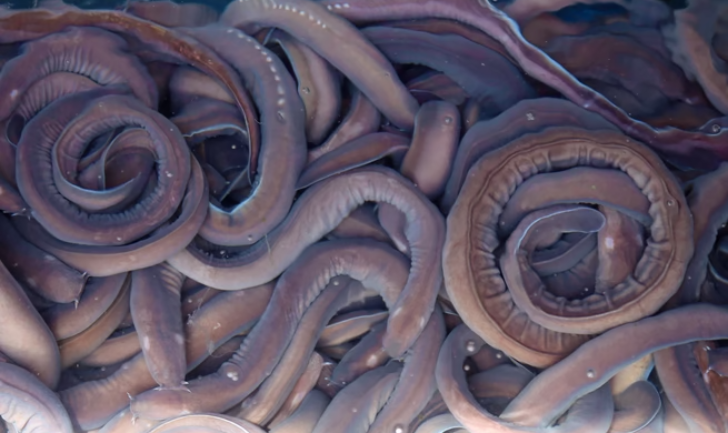Hagfish Day
Hagfish Day, observed on the third Wednesday in October, celebrates one of the ocean’s most misunderstood creatures—the hagfish. Known for its slimy defense mechanism and ancient lineage, the hagfish plays an important role in marine ecosystems as a scavenger. This quirky holiday encourages people to appreciate the beauty and value of “ugly” or unusual animals, reminding us that every species has a purpose in nature. Educational events, marine biology talks, and fun social media posts often mark the occasion.

General Characteristics
Jawless Fish: Hagfish are jawless, which means they do not have traditional jaws like most fish. Instead, they have a cartilaginous structure that helps them rasp food.
Slime Production: One of their most notable features is their ability to produce large amounts of slime as a defense mechanism. When threatened, they can release a thick mucous that can fill the gills of predators, effectively suffocating them.
Body Structure: They have elongated, eel-like bodies and can grow to lengths of about 16 to 40 inches (40 to 100 cm). Their skin is often a pinkish or gray color.
Habitat and Distribution
Deep-Sea Dwellers: Hagfish are primarily found in deep ocean waters, usually at depths of 1,640 to 6,560 feet (500 to 2,000 meters). They can be found in cold waters around the world, particularly in the North Atlantic and North Pacific Oceans.
Benthic Lifestyle: They tend to live on or near the ocean floor, where they scavenge for food.
Diet and Feeding Habits
Scavengers: Hagfish are primarily scavengers that feed on dead and decaying animals. They are known for their unique feeding behavior, which involves burrowing into the carcasses of larger animals and consuming them from the inside out.
Feeding Mechanism: They have specialized rasps (horny teeth) on their tongue that allow them to scrape off flesh from their prey.
Reproduction and Lifespan
Reproductive Strategies: Hagfish have a relatively simple reproductive system. They are believed to be hermaphroditic, meaning they possess both male and female reproductive organs. However, not much is known about their reproductive habits.
Lifespan: Hagfish can live for several years, although specific lifespan data is limited.
Ecological Importance
Nutrient Recycling: By feeding on dead organisms, hagfish play a vital role in the marine ecosystem by helping to recycle nutrients and maintain the health of the ocean floor.
Biodiversity: As one of the most primitive vertebrates, they provide insights into the evolution of vertebrates and the history of life in the oceans.
Conservation Status
Research and Awareness: While hagfish are not currently considered endangered, their habitats can be threatened by deep-sea fishing practices and environmental changes. Research and awareness about their ecological role are essential for their conservation.


